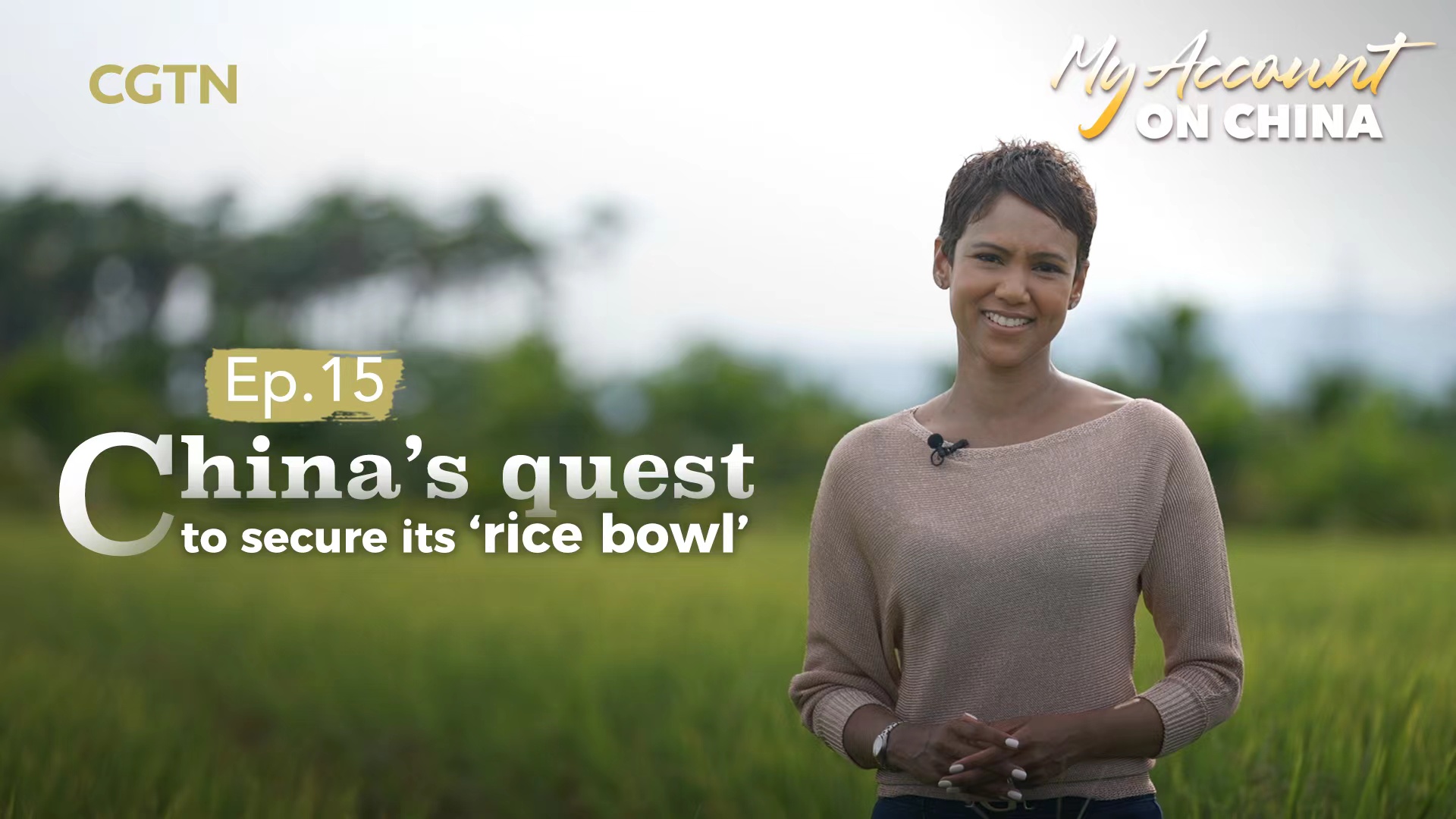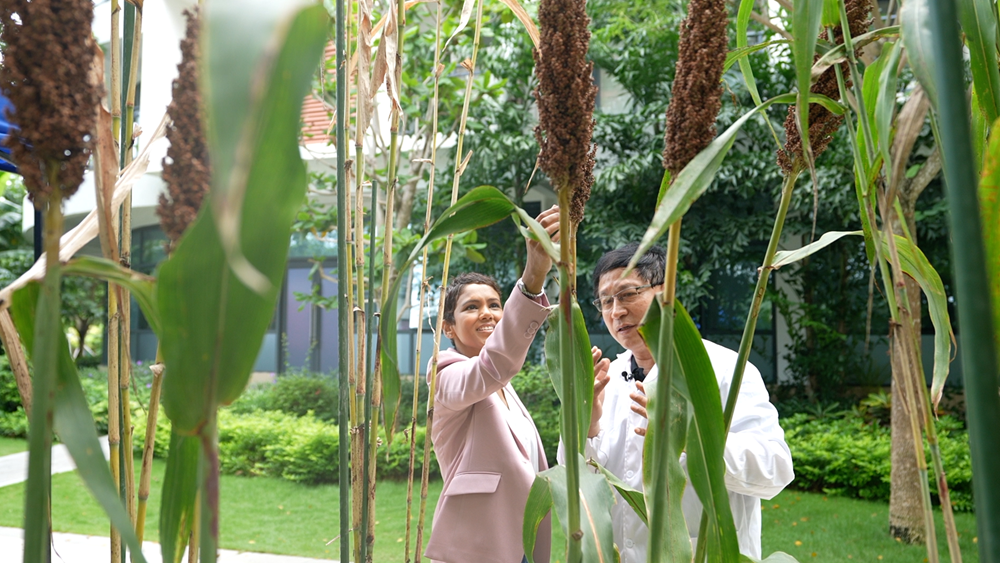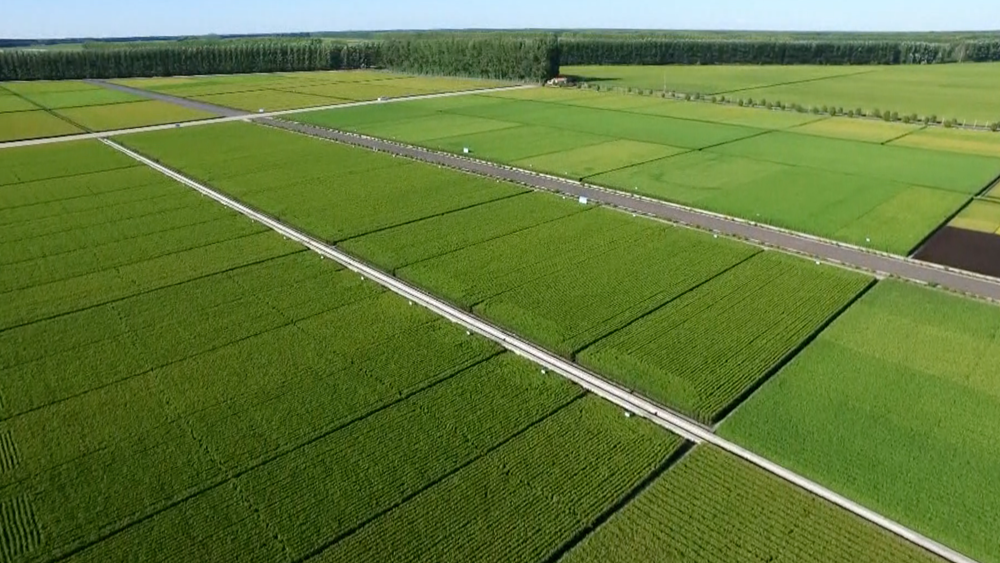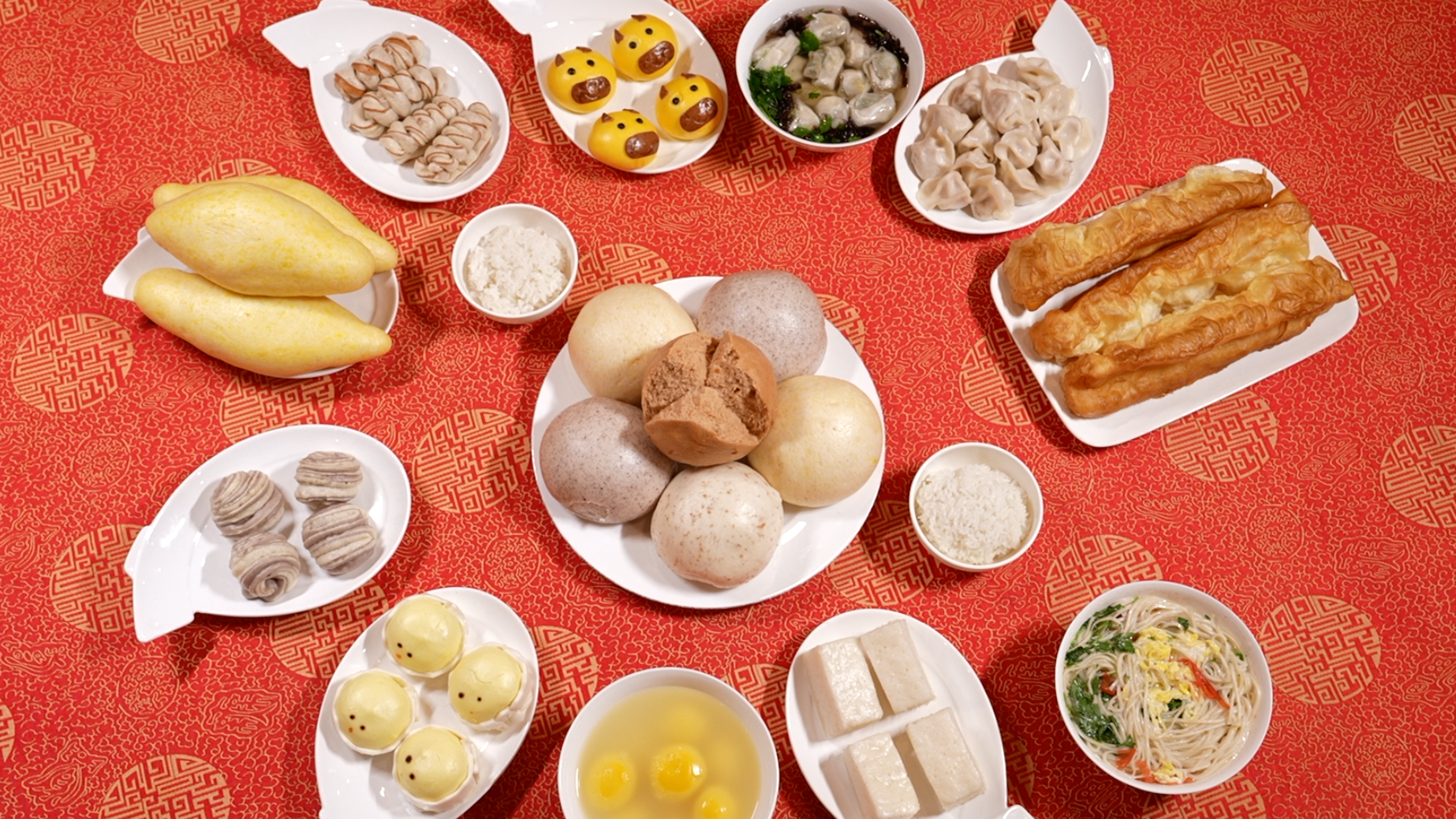08:23

Decades ago, a full bowl of rice was a dream for Chinese people. But today, it's a reality for all. Ensuring that 1.4 billion people have food on their table is a priority for China and a cornerstone of Chinese President Xi Jinping's career. He had spent years working in underprivileged rural regions and witnessed the struggle to put food on the table.
President Xi has always emphasized the importance of self-reliance in food. He once said, "Chinese people should hold their rice bowls firmly in their own hands, with grains mainly produced by themselves."
"Nanfan" or "seed breeding in the south" was the first step in China's agricultural program. It began in the 1950s to boost the country's agriculture.
Scientists have cultivated over 70 percent of new crops varieties under this initiative. The breeding cycle has also been shortened by more than a third from 10 to five or seven years due to the climate conditions in the south.

Xia Mian, right, introduces a sorghum variety, dubbed "giant," to Gasthoori Manickam. /CGTN
Xia Mian, right, introduces a sorghum variety, dubbed "giant," to Gasthoori Manickam. /CGTN
I visited one breeding base in Sanya in the southern Chinese island province of Hainan to see how experts are improving the seed technology.
I spoke to Xia Mian, head of the department for cooperation and exchanges at Yazhou Bay Seed Laboratory. He told me that Hainan has made a great contribution to China's hybrid rice breeding technology. He said China's rice production is top in the world, and it also provides adequate food for the people.
The laboratory, established in 2021, is one of many Nanfan bases in Hainan. They are often called China's "Silicon Valley of Seed Breeding." Xia told me researchers are helping China develop self-reliance on seeds through innovation.
Six to seven generations of major crops, including rice and corn, have been improved over the past 60 years. Each generation yields a 10 percent increase in output.
Thanks to scientists like him, China's annual grain yield has reached more than 650 million tons for seven years in a row. Each Chinese person has about 480 kilograms of food every year, which is 80 kilograms above the world average.

An aerial shot of Jiansanjiang's rice paddies. /CGTN
An aerial shot of Jiansanjiang's rice paddies. /CGTN
The next step in China's agriculture program is "Beiyu" – "planting in the north." I went up north to China's grain barn – Heilongjiang Province – where 11 percent of the country's food is produced. Jiansanjiang Plain is an important production area.
Cai Jianhua, deputy party secretary of Beidahuang Group's Jiansanjiang Branch, told me that Jiansanjiang provides one in every 50 bowls of rice in China.
So what's the secret in growing high-quality rice? Cai said it's the fertile black soil in the north. It's rich in organic matter, which is good for farming.
To protect the black soil, the farms in Jiansanjiang have established more than 240 monitoring points to form a network for all soil types and crops. They take the samples from these points and test the nutrients in them. Other measures include using more organic fertilizer.

Gasthoori Manickam takes a test drive on an automated tractor at Qixing farm in Jiansanjiang. /CGTN
Gasthoori Manickam takes a test drive on an automated tractor at Qixing farm in Jiansanjiang. /CGTN
A more sustainable method of farming is also adopted. Technology has redefined farming and made agricultural production smart. With the help of satellite navigation, farmers can operate rice planters at the touch of a button.
A worker told me that farming used to be very hard. But with advanced machinery, they can do the job at home. They are able to set the routes on their smartphones or computers. Farming has become much easier for them.
Three generations of Chinese farmers have settled here. They have witnessed tremendous changes in the farmland they call home. From a single tractor to thousands of machines, the agricultural base in northeast China has grown with advanced technology.

Some of China's common staple foods. /CGTN
Some of China's common staple foods. /CGTN
I was impressed by China's hard work and innovation to ensure food security in a scientific and sustainable way. China has managed to feed one fifth of the world's population with a quarter of the world's total food production, on less than nine percent of the world's arable land.
This is truly the home of Chinese rice. From grains to a bumper harvest, China's quest to secure its rice bowl and be food self-sufficient puts it on the world stage to ensure the world's food security.
As the world faces the effects of climate change and other uncertainties, China said it will enhance cooperation with other countries to safeguard global food security for a shared future.
(CGTN reporters Li Jiejun, Wu Guoxiu, Sun Tianyuan and Wan Hongjia also contributed to the story.)

